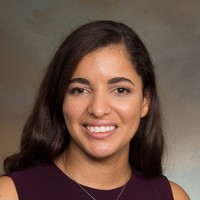
Olbelina Ulloa
- Courses7
- Reviews19
- School: Texas A&M University
- Campus: Galveston
- Department: Chemistry
- Email address: Join to see
- Phone: Join to see
-
Location:
200 Seawolf Pkwy
Galveston, TX - 77554 - Dates at Texas A&M University: November 2017 - December 2019
- Office Hours: Join to see
Biography
Texas A&M University Galveston - Chemistry
Instructional Assistant Professor at Texas A&M University Galveston Campus
Higher Education
Olbelina
Ulloa (Letko)
Pearland, Texas
As a faculty member I teach organic chemistry, chemistry for engineers and green chemistry. My research interests are in catalysis pertaining to inorganic chemistry and renewable fuels, as well as organic chemistry and polymers.
Experience
CEA - Commissariat à l'énergie atomique et aux énergies alternatives
Visiting Research Scientist
• Collaboration focused on electrochemical analysis of catalytic systems that mimic the structure and functions of NiFe-H2ases.
Rice University
Wiess Postdoctoral Fellow in Chemistry
• Developed procedure for high-throughput screenings of peptide libraries in organometallic reactions
• Optimized conditions for copper catalyzed C-N bond formation (Chan-Lam coupling) in peptides
• Utilized 2D NMR, GCMS, MALDI-MS, LCMS, HPLC kinetics, UV-Vis, and EPR for purification and characterization of peptides, ligands and metallopeptides
• Trained three undergraduates and one graduate student in peptides synthesis and characterization with traditional organic synthesis methods
Texas A&M University Galveston Campus
Instructional Assistant Professor
Olbelina worked at Texas A&M University Galveston Campus as a Instructional Assistant Professor
Education
University of Illinois at Urbana-Champaign
Doctor of Philosophy (Ph.D.)
Inorganic Chemistry
• Synthesized novel paramagnetic bimetallic complexes proposed to catalyze hydrogen production from acids • Utilized extensive knowledge of inorganic synthesis, Schlenk and glovebox techniques for catalyst synthesis and isolation (5 years of experience) • Utilized FTIR, 2D NMR, EPR, ESI-MS, GC, UV-Vis and electrochemical methods to characterize and test the catalytic properties and structure of complexes • Research featured as a spotlight article in the Journal of the American Chemical SocietyThe University of Connecticut
Bachelor's degree
Chemistry






